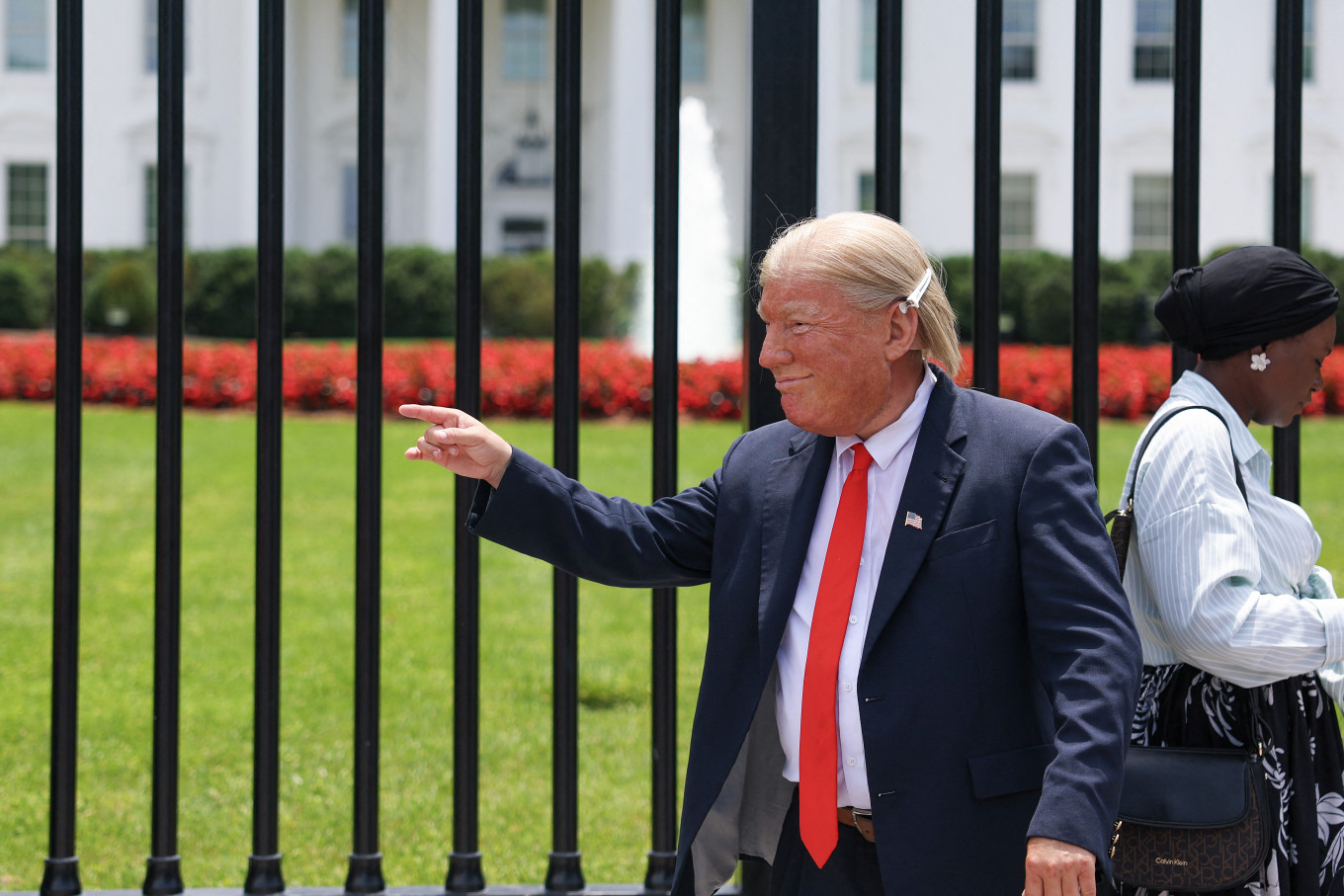Popular Reads
Top Results
Can't find what you're looking for?
View all search resultsPopular Reads
Top Results
Can't find what you're looking for?
View all search resultsFinding clarity in the eye of the global storm
What are the options for corporations, investors and policy makers in this whirlwind of uncertainties?
Change text size
Gift Premium Articles
to Anyone
A
s Typhoon Trump sweeps over trading partners and foes alike, even as US stock markets are breaking record highs, there is an eerie feeling that one is trapped inside the eye of the hurricane, with no guidance on what to do or where to go.
There is misinformation and disinformation everywhere, since we have no objective and independent verification on the real casualties and devastation in the Ukraine and Gaza wars, or rein in the Israel-Iran conflict before it becomes nuclear.
Reality is today stranger than even the most speculative science fiction. Who would have predicted a month ago that US President Donald Trump would impose 50 percent tariffs on India or unlisted start-up Perplexity with an estimated valuation of US$18 billion would bid $34.5 billion for the app Chrome from Google/Alphabet, which has a market cap valuation of $2.4 trillion or at least 130 times larger than Perplexity?
Lions are trying to swallow elephants, as the US is taking on China and now India, the next superpower with a population (1.4 billion) 4.2 times that of the US, but gross domestic product (GDP) at $3.9 trillion or only 13.3 percent of the USA. Nevertheless, India's real GDP is growing at 6.2 percent in 2025, more than double the 2.7 percent growth for the US. India has the second largest pool of STEM graduates at 2.55 million in 2020, compared with 3.57 million in China and only 820,000 in the US.
From the financial markets point of view, the US seems to be on a roll. The latest data show that 5,489 companies listed in the US have a market valuation of $81.25 trillion or 278 percent of 2024 GDP, with rising revenue of $29.96 trillion, about 100 percent of GDP.
The Magnificent Seven alone have a market cap of $20 trillion (just under one quarter of total market capitalization), but revenue of $2.1 trillion or 7 percent of total US listed corporate revenue. The US economy is more resilient than expected, despite real US interest rates at 1.17 percent for 10-year Treasuries, even though it was at 2 percent as late as February this year. No surprise that US Treasury Secretary Scott Bessent has called for a 175 basis points cut in interest rates, since the US gross debt at $37 trillion is already paying $1 trillion a year in interest rate charges.
With an expected three further cuts in Fed interest rates for the rest of the year, small wonder that investors in the US markets are cheering.
Mainstream economists who thought that global tariff shocks would have a serious impact on the global economy are still puzzled why inflation so far has remained muted, while the anticipated trade and economic slowdown have not surfaced in the economic data.
Amazingly, the latest July 2025 IMF Global Economic Outlook report, while warning that the tariff shocks added to policy uncertainties, the front-loading of exports to avoid tariffs led to a strong surge in exports to the US in the first quarter of the year, which supported growth in Europe and Asia.
Due to the easing of monetary policy as global inflation receded and aided by depreciation of the dollar, the IMF upped their projections from the April 2025 forecast modestly from 2.8 percent to 3 percent for 2025 and from 3 percent to 3.1 percent next year.
In short, despite the tariff uncertainties, things don’t look so bad, which is why we seem to be bipolar in expectations; the best of times in financial markets, and worst of times in terms of potential escalating conflicts from Ukraine to the South China Sea.
What are the options for corporations, investors and policy makers in this whirlwind of uncertainties?
Several patterns are emerging from the confusions. First, the Trump administration is using tariffs to raise fiscal revenue to somewhat restore fiscal credibility. When there is pushback, like those from China, Canada and India, there can be some moderation, especially if Trump sees benefits to the US, such as relaxation of semiconductor chip sales from Nvidia and AMD to China, subject to 15 percent equivalent of an export tax.
Second, most policymakers see that with the AI and robotics disruption, there is no alternative but to double-down on using AI tools to improve domestic productivity, upgrade labor force skills and in essence use industrial policy to help domestic businesses transform through better digital public infrastructure.
Third, decoupling of global supply chains is tougher than expected, as every company and country within these supply chains are looking into how to make them more resilient, agile and flexible to adjust to major trade and tariff policy changes.
Because the US is moving toward a bilateral negotiation stance, each country and company is going below the radar screen not to provoke any sanction or tariff/non-tariff action. They are surely but silently working toward trade and payments diversification so as to minimize future disruptions and shocks.
In short, while the US is noisily creating shock and awe policy announcements, the rest of the world is quietly preparing for alternative arrangements that involve more local currency, netting of payments and more South-South (N2N or node to node) trade to ensure that trade continues to sustain growth and development.
Former Singapore prime minister Lee Hsien Loong warned that the “best framework is the world, temporarily minus one”. If America is going one way, while the rest want to retain the multilateral system, we may end up with a “minus one” order.
All storms subside, just like political fevers. But living in the eye of the storm, working together to isolate American exceptionalism may be one road out of chaos. The other, as Austrian philosopher Friedrich Hayek said, is the Road to Serfdom, but he was referring to socialism.
---
The writer is a distinguished fellow of the Asia Global Institute (AGI) and chairman of George Town Institute of Open and Advanced Studies (GIOAS) at Wawasan Open University.











